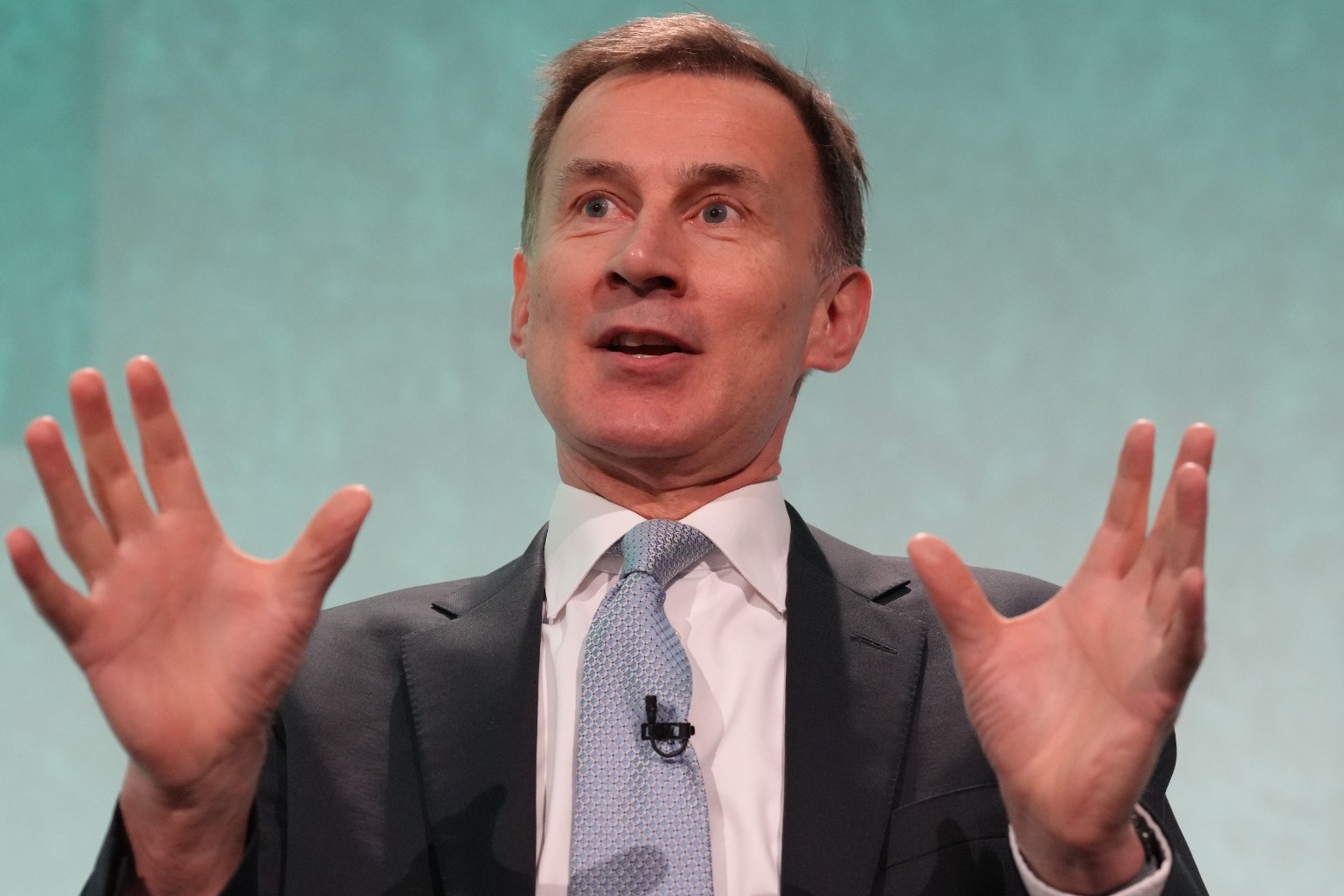
National insurance cut from 12% to 10%
It means families with two earners are nearly £1,000 better off
The move, announced in last year’s autumn statement, was hailed by the Conservatives but Labour called it a “raw deal” and economists said many households are still facing the burden of high taxes.
Ministers have previously said cutting the main rate for employees is a tax cut worth £450 for the average employee on £35,400 in 2024/25.
Prime Minister Rishi Sunak, who has said he wants to keep cutting people’s taxes if possible, said it was possible because of the “tough decisions” taken by the Government.
Chancellor Jeremy Hunt said: “Today’s cut in national insurance by 2% means that a typical family with two earners will be nearly a thousand pounds better off this year.
“That is really important in a cost-of-living crisis where people have been feeling real pressure on family budgets, but also it rewards work, it’ll bring more people into the labour force and that is good for growing the economy.”
He added: “It’s the start of a process, as Chancellor if I can afford to go further I will, I don’t yet know if I can.
“But we want to do this because it helps families, it also helps to grow the economy, and we believe that a lightly taxed economy will grow faster and in the end that’ll mean more money for public services like the NHS.”
HMRC are publishing an online tool, the Treasury said, to help people see how much they can save this year on national insurance contributions.
But finance experts and economists have said frozen tax thresholds, which have been pushing people into higher tax brackets, will offset the national insurance boost for many people.
Think tank the Resolution Foundation expects the biggest gains from this year’s tax changes will be for people earning about £50,000, who will particularly benefit from the rate cut, while still losing out somewhat from the personal allowance freeze.
Adam Corlett, principal economist at the think tank, said cutting national insurance was a “smarter choice than the options of cutting income tax or inheritance tax”.
“But for many, particularly those earning less than £26,000, the tax cut today will be offset by the tax rise that is effectively coming in April, when personal tax thresholds are frozen again.”
The Institute for Fiscal Studies said personal taxes were rising, despite the cut.
In a briefing, it said: “This year will see both the national insurance contributions (NICs) rate cut and a tax increase via the planned freeze in income tax and NICs thresholds and allowances in April.
“Put the two together and this is, overall, actually a tax increase.”
It said that for both the highest and lowest-earning taxpayers, the tax increase from frozen thresholds was “much larger” than the national insurance cut.
Clare Stinton, head of workplace savings at Hargreaves Lansdown, echoed this.
“The two (percentage point) cut may seem like a lifeline to households post-holiday season but the reality is that for some employees this reduction will be offset by the freezing of personal tax threshold,” she said.
After the autumn statement in November the Government has faced pressure by Tory MPs to go further and cut income tax or inheritance tax.
There is speculation that further tax cuts could be announced in the spring budget on March 6, as Mr Sunak prepares for a general election later this year.
This could be Mr Hunt’s last chance to introduce major tax and spending changes before voters go to the polls.
Labour has rubbished the Tories’ claim to be offering households a tax cut, calling it a “raw deal”.
Shadow chancellor Rachel Reeves said: “Never have people paid so much in tax and got so little in return in the form of public services.
“This is the year of choice, the year the British people will give their verdict on Rishi Sunak and 14 years of Conservative government.”
Meanwhile the Liberal Democrats are calling for a cost-of-living rescue package for the “squeezed middle”.
Published: by Radio NewsHub